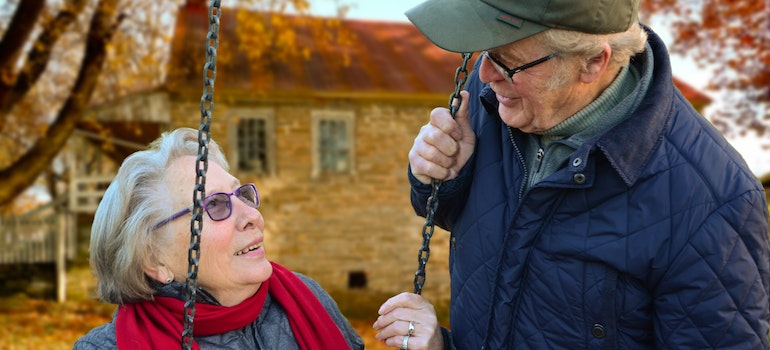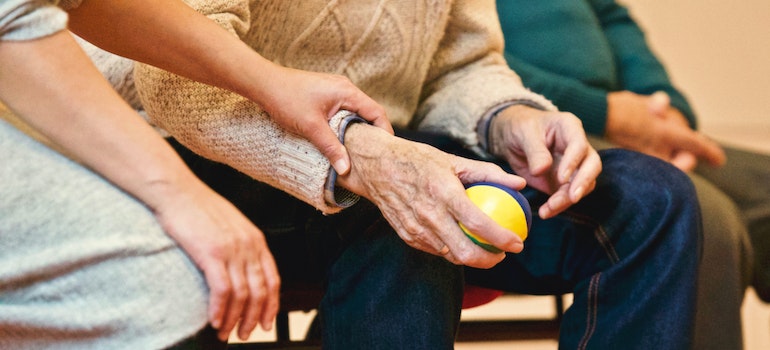Drug Overdoses Rise Among Senior Citizens
As a part of our daily practice, we at long term drug rehab Pennsylvania have been witnessing the devastating effects of drug misuse throughout the years. Although individuals of all ages, colors, and socioeconomic statuses may develop a drug problem, the number of drug overdose deaths among the elderly has risen alarmingly in recent years. Drug overdoses rise among senior citizens rapidly. What’s the cause of it? How can we stop it? Let’s talk about it today.
Jump to Section
Overdose – a burning issue of our time
When a medication or drug combination overwhelms the body to the point that it causes toxic effects, this is known as an overdose (OD).
Several substances, such as alcohol, Tylenol, opioids, or even a combination of these, may cause fatal overdoses in humans. Opioid overdoses, for example, occur when there is either an excessive amount of opioids or a mix of opioids and other substances in the body, causing the sufferer to be unresponsive to stimuli and/or to stop breathing properly.
Opioid overdose is one of the most representative examples
The opioids bind to certain receptors that also regulate the motivation to breathe, leading to this effect. Cyanosis occurs when oxygen levels in the blood drop due to inadequate breathing and manifest visually on the lips and fingers. When the brain and heart both cease working due to a lack of oxygen, death is imminent. This leads to loss of consciousness, coma, and eventually death. Without oxygen, brain damage and death set in between three to five minutes.

An addict archetype is changing
When we say ”an addict”, or ”an overdose” the first thing that comes to mind is never a sweet, caring grandma that always used to bake you cookies. However, there is so much more within people than meets the surface. You can see it best if you visit our cocaine addiction treatment center. People in their teen years or early twenties were often portrayed in the past as archetypal drug addicts. Yet in recent years, there has been a dramatic reversal of this pattern. Now, we have a growing number of seniors developing drug addictions and other health problems as a result of their drug use.
The numbers are devastating
Males have seen greater rates of increase than females over the past few years in the upward trend of drug overdose mortality among the elderly. Unfortunately. that mortality has more than tripled in the past two decades (from 2.4 deaths per 100,000 people aged 65 and over in 2000 to 8.8 deaths per 100,000 people aged 65 and over in 2020). It’s also worth mentioning that, from 2019 to 2020, the mortality rate attributable to alcohol use increased by more than 18% among those aged 65 and more.
Ethnic groups differences
Non-Hispanic Black men and women over the age of 65 had a greater fatality rate from drug overdoses than any other racial or ethnic group. The American Indian and Alaska Native populations had the greatest death rate from alcohol-related causes in the 65+ age group. On the other hand, the rate of alcohol-related deaths in this population was more than double that of the next highest population (Hispanics). In only one year, from 2019 to 2020, rates jumped by 46.5% among those of Asian or Pacific Islander descent.
The difference between genders
There’s been a more specific jump in the curb of addictions as well. The effects of fentanyl and similar synthetic opioids on the elderly population have been significant. In 2019 and 2020, the death rate associated with these medications rose by 53% among the elderly. For comparison, three times as many men as women died from alcohol-related causes between the ages of 65 and 74 in 2020. Also, four times as many men as women died from alcohol-related causes between the ages of 75 and up. In Pennsylvania alcohol rehab, the difference between genders is quite obvious as well.

What is the reason?
This increase in drug addiction (as well as fatalities) among the elderly may be attributed to a number of variables. The most significant are:
- polypharmacy
- age-related changes in the body
- misuse of prescription drugs in chronic pain management
- lack of communication between healthcare providers and patients
- lack of education of seniors on the subject
Polypharmacy
When many drugs are prescribed to a single patient to manage a variety of symptoms, this is known as polypharmacy. This method has its uses in the management of seniors’ complicated medical problems, but it also raises the possibility of fatal medication overdose.
Drug overdose is exacerbated by polypharmacy for geriatric patients in many ways. For example:
- Taking many medicines at once increases your chance of experiencing unwanted side effects or a decrease in the drug’s efficacy. This is especially worrisome among the elderly. They are more likely to be taking a wide variety of prescription and nonprescription drugs to treat a variety of diseases.
- The ability to metabolize pharmaceuticals effectively declines with age. That makes it more likely that drugs will build up to hazardous amounts in the body. Polypharmacy, the practice of taking many drugs at once, may make this problem much more severe.
- An increased risk of medication mistakes, such as missing doses or overdosing, is associated with the fact that seniors may have trouble keeping track of their various prescriptions. Drug overdose and other major health problems are possible outcomes of these mistakes.
- Certain drugs might lead to sleepiness, disorientation, or lightheadedness, all of which can increase the possibility of falls and injury in the elderly. An increased chance of this occurs in the elderly who take many drugs because of the unexpected interactions between them. These unexpected interactions can also lead to a fatal toxic reaction – overdose.
Difficulties with chronic pain management
Where pain puts its fingers – addiction develops. Opioid-based prescription pain relievers are often used in the treatment of chronic pain. While these medications may help, they also pose risks of addiction and overdose, especially for the elderly. Our benzo detox has many senior patients due to this reason. The elderly may be at increased risk for drug overdose due to physiological differences between themselves and younger persons. Also, individuals can be dealing with preexisting diseases or taking other prescriptions that increase the danger of side effects.

The elderly have to take painkillers longer
Moreover, opioids may be administered for extended periods of time to seniors with chronic pain, raising the possibility of tolerance and the subsequent need for greater dosages to attain the same degree of pain relief. A fatal overdose may occur if they take too much medicine or mix it with other drugs like alcohol or sedatives. In addition, the elderly may be less forthcoming about their pain or drug usage to healthcare practitioners. This may result in suboptimal treatment.
Aging takes a great toll on the body and the mind
There are a number of physiological changes that occur with age that might make a person more susceptible to a drug overdose. When individuals become older, their metabolism naturally slows down. This means that, as we said, pharmaceuticals and prescriptions will remain in their systems for longer than they would otherwise. When a senior takes many drugs, particularly those with the potential to interact with one another, this raises the danger of an overdose.
The liver and kidneys don’t work like they used to before
Medications and other substances are filtered out of the body in large part by the liver and kidneys, thus any impairment in their function might have serious consequences. The liver plays a major role, especially for alcoholics, and many patients at inpatient alcohol rehab Pennsylvania come with serious liver issues. Age-related declines in liver and kidney function may impair the body’s ability to flush toxins out of circulation. Overdosing becomes more likely if drugs accumulate in the body.
Also, as we age, muscle and fat distribution shifts. This may modify the efficacy of the medicine and raise the danger of an overdose by affecting its distribution throughout the body. Another part of the body that changes significantly is the brain. The capacity to remember to take medicine as recommended might be impacted by cognitive changes that occur naturally with aging. As a result, overmedication may occur when the elderly fail to realize they have already taken a dosage of a drug.
Loneliness is just as dangerous
Rising rates of loneliness and isolation among the elderly are also a problem. Retirement, the loss of friends and loved ones, and a general deterioration in health are just a few of the social changes that may occur as individuals age. All of these things may add up to an increased risk of depression and anxiety due to increased feelings of loneliness and isolation. For some seniors, the solution to dealing with these feelings is to experiment with medicines. As a result, depression is a common reason for patients to seek help in dual diagnosis treatment centers Pennsylvania residents recommend.
Many seniors have sentiments of pessimism and despair because they believe society no longer recognizes or loves them. As an added complication, older citizens may not have easy access to healthcare and addiction treatment programs. This can make it way more challenging for them to become sober.

What can we do to stop drug overdose rise among senior citizens?
Healthcare practitioners, carers, and seniors themselves must all work together to reduce the prevalence of drug overdoses among the elderly. We all need to take certain steps in order to make this vicious disease come to an end. For starters, preventing drug overdoses requires education on the dangers of pharmaceutical abuse and the need of following dosing instructions, especially for the elderly and their caretakers.
Professionals need precise instructions
Medical staff should be taught how to accurately and concisely relay prescription instructions to the elderly. Healthcare professionals should check the prescriptions their patients are taking against their patient’s medical records to make sure there are no differences. Also, patients over 65 should be urged to provide a list of their medications at each medical session.
Education on all levels
As our experts at the marijuana rehab center suggest, education on all levels can help a lot with this problem. Healthcare practitioners should routinely evaluate their elderly patients’ prescription lists to check for potential drug interactions, excessive medication use, and proper dosing based on the patients’ ages and health conditions. It is important to teach seniors and their caregivers how to appropriately store, handle, and dispose of drugs, including how to read labels, utilize pill organizers, and properly flush unwanted pills down the toilet.

Less is more
When it comes to elderly patients, healthcare practitioners should strive to limit polypharmacy. They try to eliminate or at least minimize the use of needless drugs. Where feasible, healthcare practitioners should try to manage elders’ health concerns via non-pharmaceutical interventions. This includes exercise, physical therapy, and cognitive-behavioral therapy.
Intervening without medications
In recent years, there’s been a current of professionals that advocate for different approaches to this problem. A lot of interesting types of therapies developed in the process – music therapy for addiction being a great example. The imperative is to get as many drugs as we can out of the elderly patient’s system. Shifting the focus to the psychical parts of addiction seems to be more effective as well.
Monitoring is half of the job
Seniors need frequent checkups so their health and medicines may be closely monitored. Doing so may aid in the early detection of drug interactions and overdoses. Caregivers need help, too, since they play a crucial role in avoiding elderly drug overdoses. They need help and instruction in identifying the warning symptoms of an overdose and managing the drugs of their elderly patients safely.

We need to stop drug overdoses rise among senior citizens together
The drug overdose rise among senior citizens in recent years has been alarming. In times like these, we shouldn’t forget our grandmas and grandpas. Our elderly are a crucial part of this huge river of life. When the times get rough and they enter a whirlpool, let’s make a little creek of hope on the side for them.
References:
https://store.samhsa.gov/sites/default/files/SAMHSA_Digital_Download/PEP20-05-02-002-compressed.pdf
https://www.ncbi.nlm.nih.gov/pmc/articles/PMC5675036/
https://www.pexels.com/photo/man-hands-waiting-senior-33786/
https://www.pexels.com/photo/two-adult-women-beside-each-other-3768114/